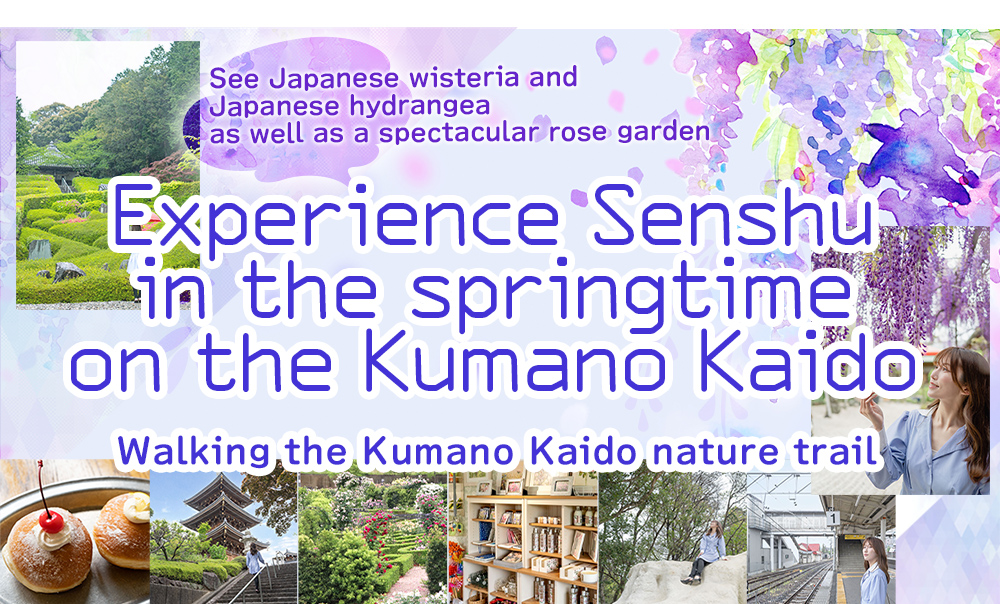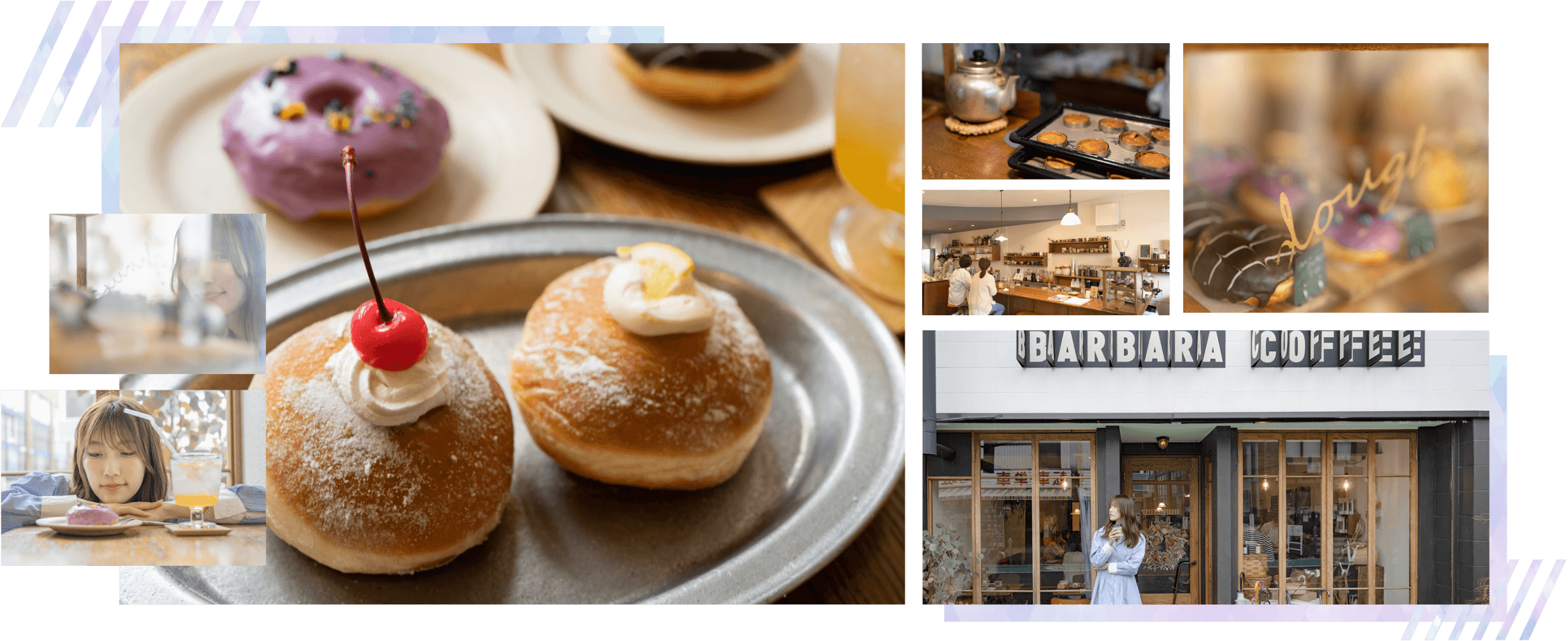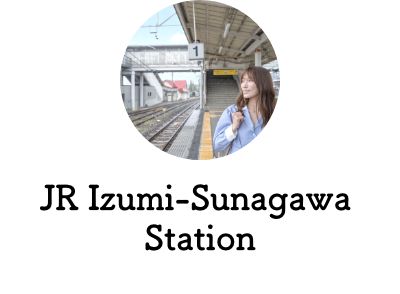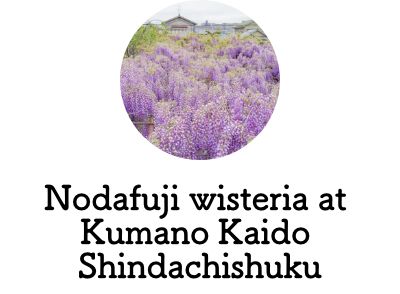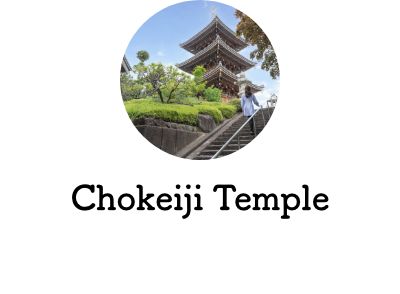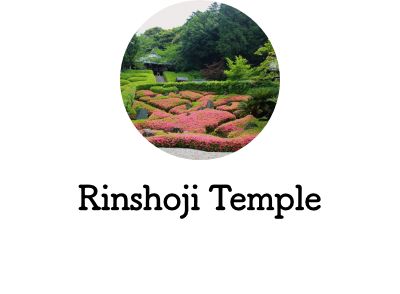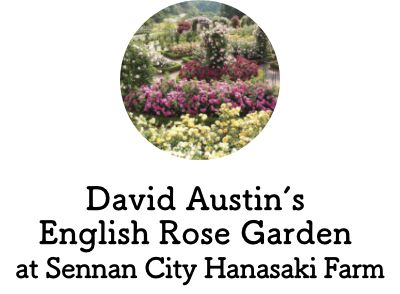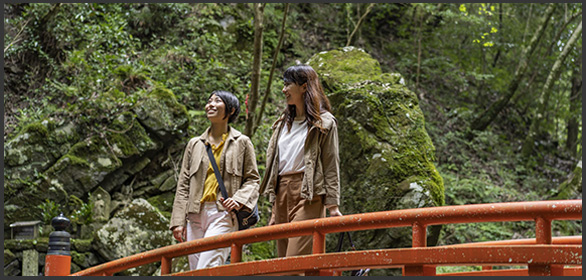- Nature Spots
- Historical Sites
In spring, the Kumano Kaido is popular with both walkers and hikers. The route passes through the three Kumano Sanzan shrines of Wakayama, recently listed as World Heritage sites. Note that the itinerary outlined below focuses on natural attractions such as Japanese wisteria, Japanese hydrangea and a beautifully tended rose garden. The walk is suitable even for rainy days, and is a great way to appreciate the natural wonders of Japan in the springtime.
Allow around 5.5 hours

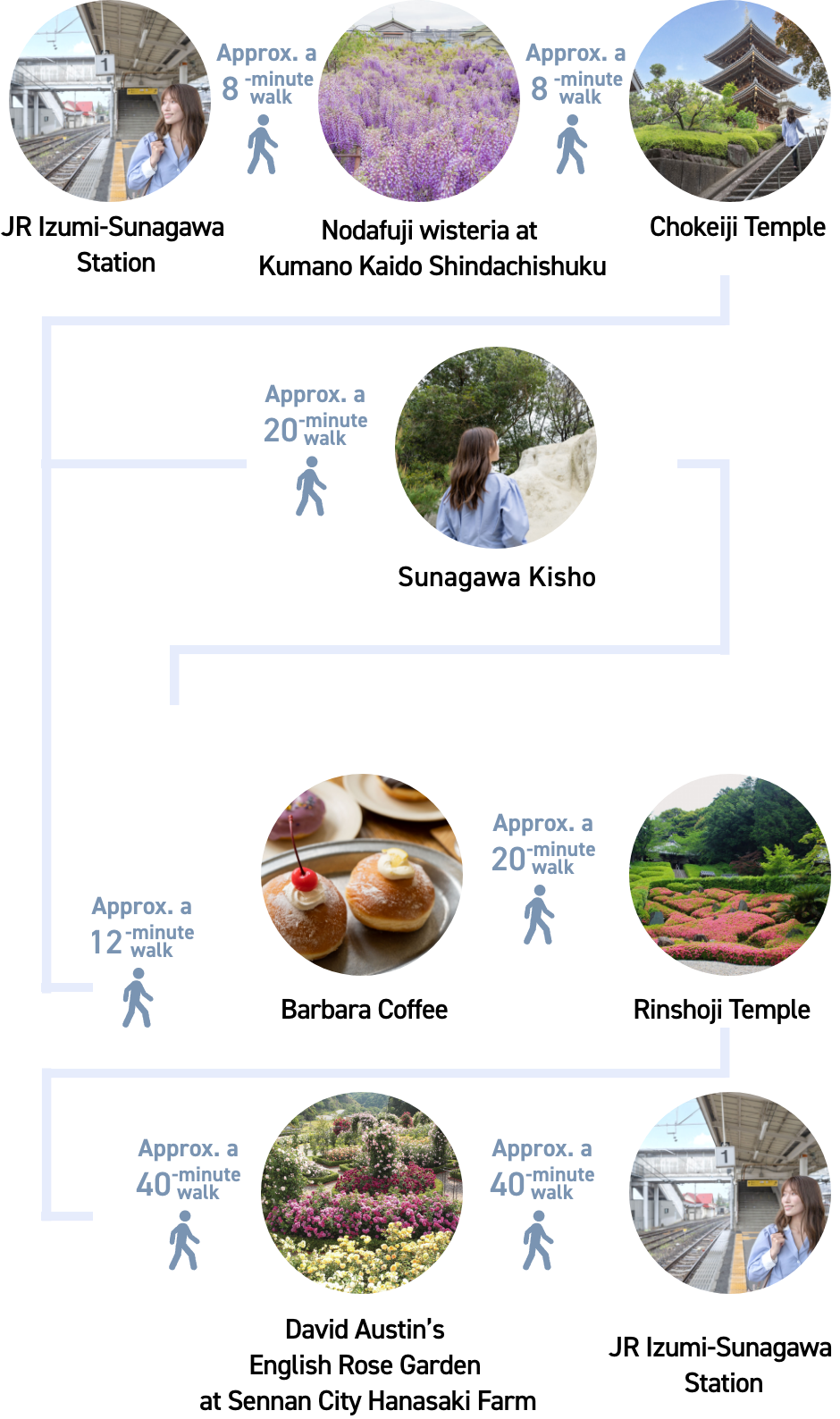
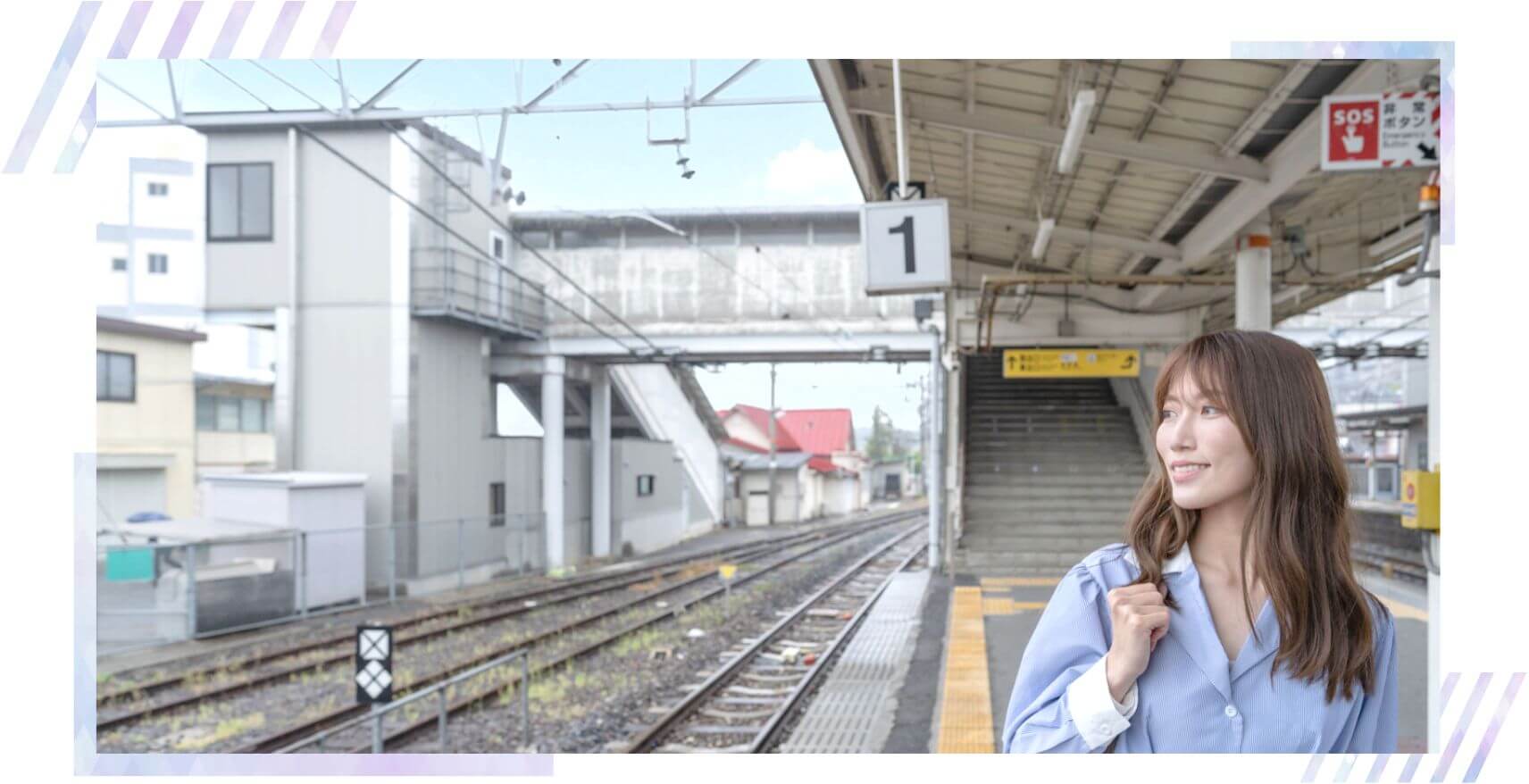
The tour starts at JR Izumi-Sunagawa Station, one of several near to Kumano Kaido Shindachishuku. There is plenty of walking involved, so wear comfortable clothes and walking shoes. Don’t forget an umbrella if it looks like rain!

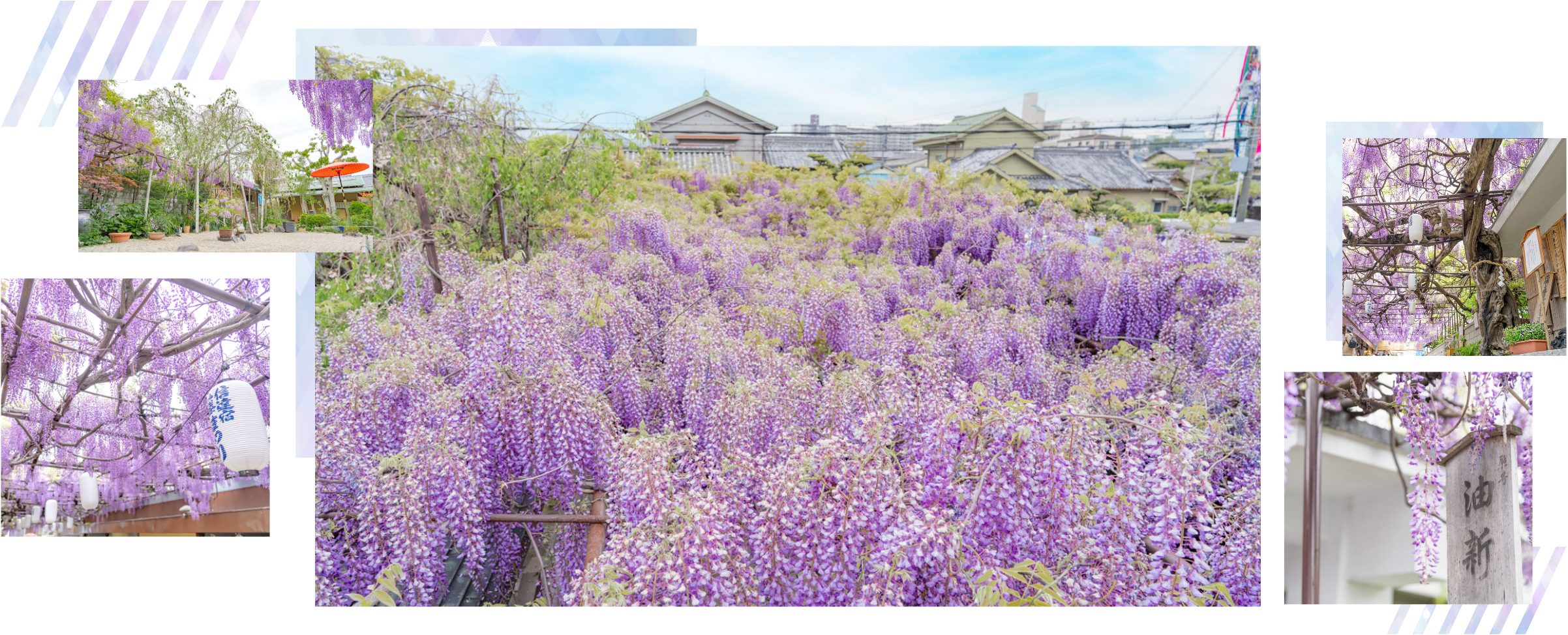
In the Shindachi-Makino district of Sennan City, the Kumano Kaido passes by the spectacular nodafuji (Noda wisteria) tree at the Kajimoto Residence. This tree was planted over 40 years ago by the late Mr. Kajimoto, dubbed the Heisei Flower Man, and has grown into a magnificent specimen with over 40,000 flower clusters. The Kajimoto garden is open to the public from mid to late April every year, when the wisteria is in full bloom. There is a dedicated viewing platform where you can admire the nodafuji trellis from above. On the Saturday, the garden comes alive for the Fuji Matsuri festival, which attracts visitors from far and wide. It’s a great way to experience the springtime delights of Sennan.
This area was formerly known as Shindachishuku, a post station on the popular pilgrimage trek along the Kumano Kaido. During the Edo period it served as the first post station for the Kishu Tokugawa daimyo and his entourage as they made their bi-annual journey up to Edo (modern-day Tokyo). Today we can still see the tsunoyake building that served the daimyo’s headquarters.
The newer residences (including the Yamada Residence, a registered Tangible Cultural Asset of Japan) are wonderful examples of wealthy yashiki residences built in Senshu during the Edo period. Many of these residences are open to the public on the day of the Fuji Matsuri festival.
The nodafuji wisteria has a strikingly beautiful flower, and it also produces a wonderful sweet scent that heralds the arrival of spring. So be sure to include the Kajimoto Residence in your itinerary!
| Address | 大阪府泉南市信達牧野1338 |
|---|---|
| Tel | 090-4281-8741 (Kumano Kaido Shindachishuku Fuji Conservation Group) March 1 — April 15 072-483-8191 (Commerce, Workers and Tourism Section, Industry and Tourism Division, City of Sennan) |
| Official Website | http://kumanokaido-fuji.sakura.ne.jp/ |
* See website for more information.

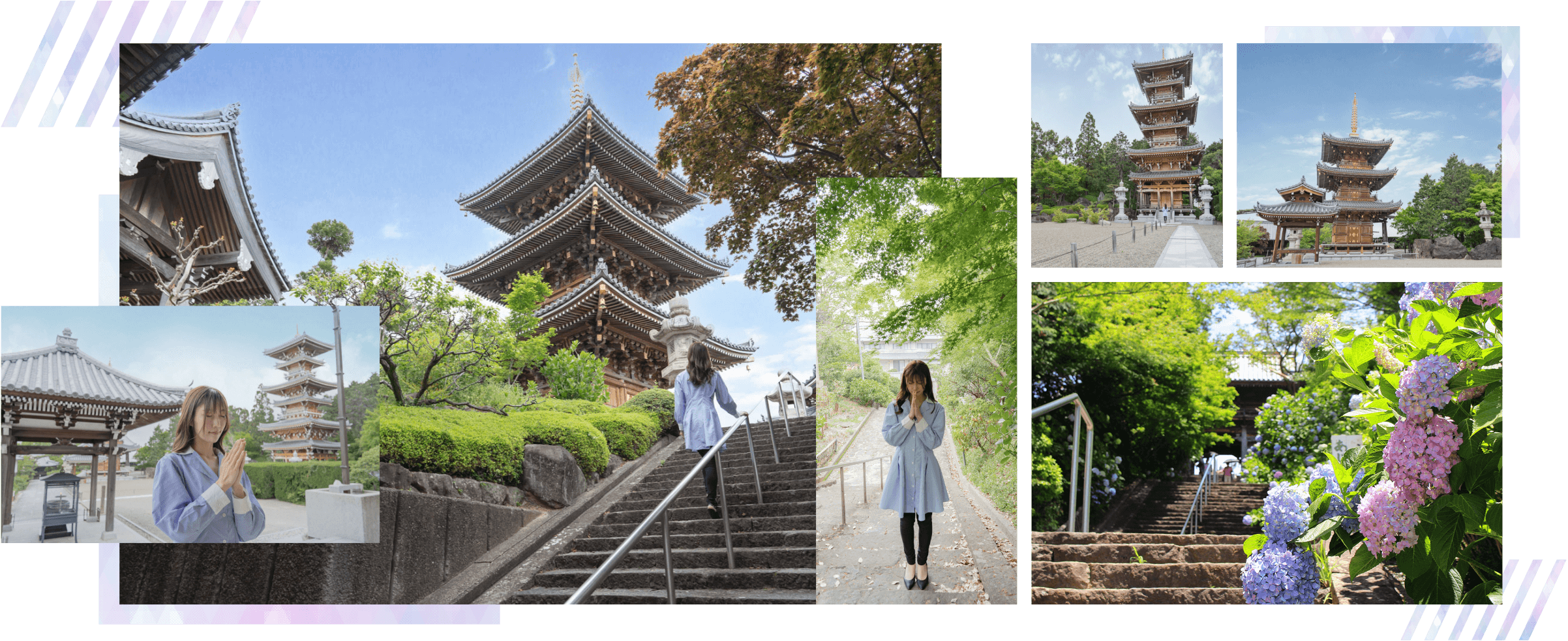
Chokeiji Temple, better known as Ajisaiji Temple, is perched atop a hill with sweeping vistas over the city of Sennan. It is thought to have been built by the monk Gyoki in the Jinki era (724 – 729), then rebuilt during the Keicho era (1596 – 1616) by Hideyori Toyotomi, who for reasons unknown changed the era name from Keicho to Chokei.
The 100 stone steps at the entrance are called the Yakuyoke no Ishidan (“staircase to ward off evil spirits”). Legend has it that for maximum benefit, men should deliver the appropriate prayer on the 42nd step, and women on the 33rd step. So remember to keep count as you go up the stairs!
On either side of the Niomon gate at the foot of the staircase are Deva King figurines, and suspended inside the gate is an enormous zori sandal that also helps to ward off evil spirits.
Just beyond the Niomon gate is the main entrance, followed by the Korodo incense temple and then the Hondo main temple. On the left are two distinctive three-story pagodas, the Samboto (built in 2004) and the Kujakuboto (built in 2015). At first glance the Kujakuboto looks like a six-story pagoda, but on closer inspection it has only three stories.
Every June, the Yakuyoke no Ishidan staircase and temple grounds are transformed into a sea of color by some 6,000 hydrangea bushes. Sadly, the hydrangea display in June doesn’t coincide with the spectacular nodafuji wisteria at Shindachishuku in April. But if you are in the area for the Fuji Matsuri festival, it’s still worth a visit to Chokeiji Temple to see the brilliant green foliage of the maple trees.
| Address | 大阪府泉南市信達市場815 |
|---|---|
| Tel | 072-483-2692 |
| Tourist information | https://welcome-sennan.com/tourist-spots/chokeiji |
(Please call for further details)
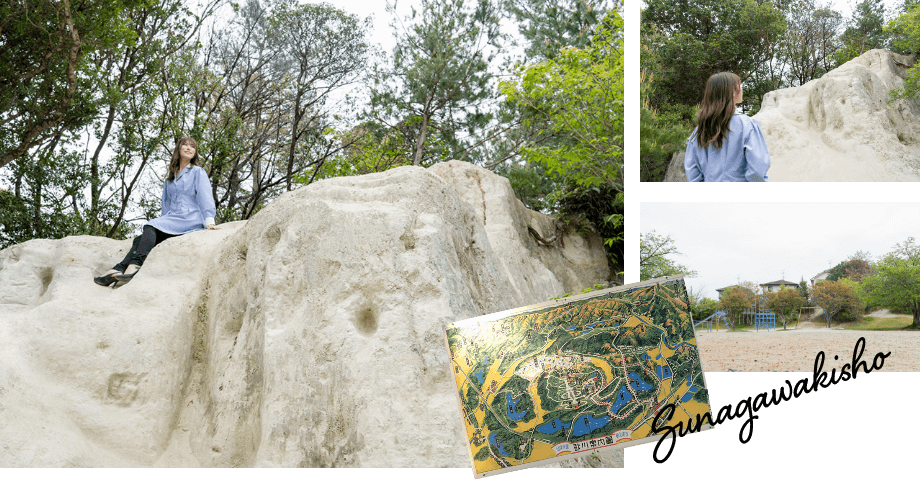
Sunagawa Kisho
If you’re still feeling energetic or perhaps a bit nostalgic, Sunagawa Kisho is just 20 minutes’ walk from Chokeiji Temple. In the 1920s and 1930s this was a popular tourist destination, a spectacular expanse of pine forest punctuated by sandstone hills. It became an even bigger tourist drawcard when the nearby Sunagawa Yuenchi amusement park opened in 1935. Today, however, only a small portion of Sunagawa Kisho remains, inside a park that’s surrounded on all sides by residential housing. How amazing to think that sandstone hills formed during the diluvial period two million years ago became a major tourist attraction during the Showa era!


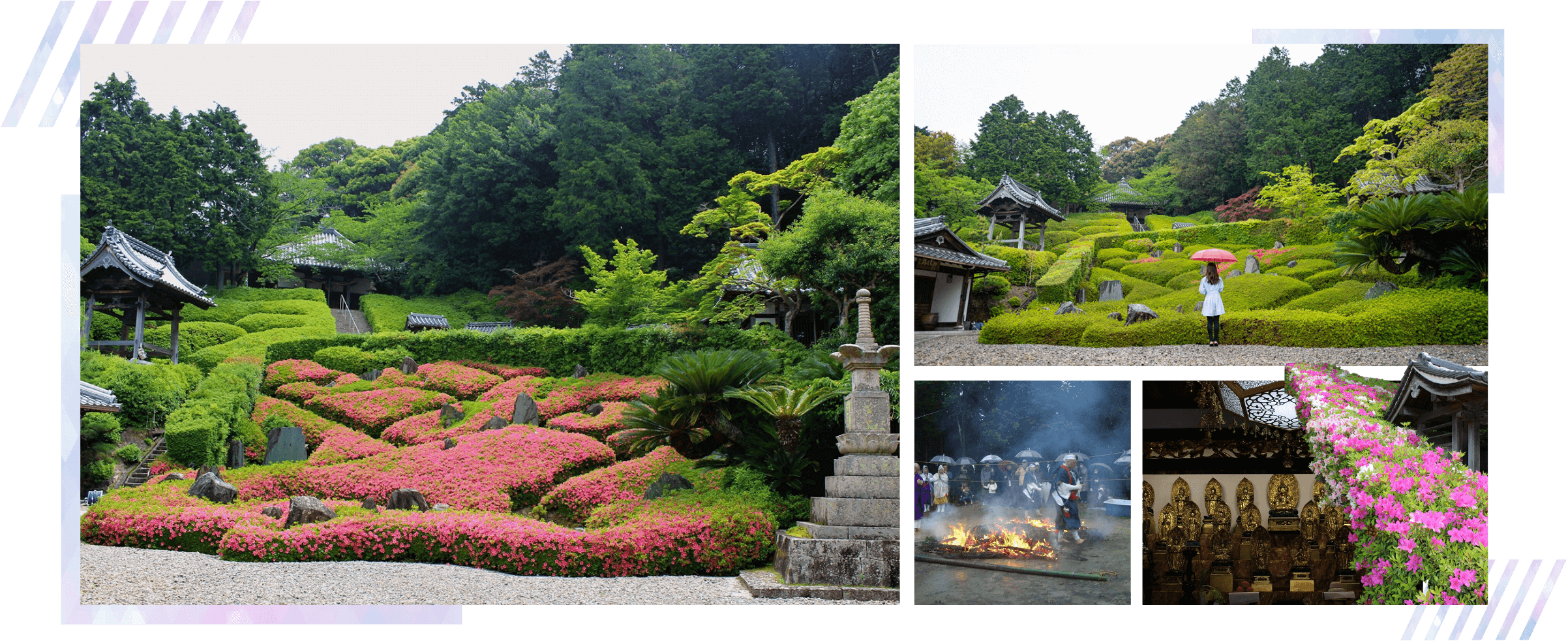
Located at the base of Mt. Atago, Rinshoji Temple is thought to have been founded by the monk Gyoki and has historically significance as a center of Shingon Buddhism. The rhododendrons in the temple garden are usually at their most colorful in late April, right when the nodafuji wisteria are also in full bloom. During the Heian period, the Emperor Horikawa is said to have bestowed the title Tsutsuji-san (Mt. Rhododendron) on temple for its stunning vista of mountains covered in rhododendrons.
The temple garden, sculptured from the slope of Mt. Atago, features beautifully pruned Satsuki azaleas, an arrangement of bluestone rocks and a gentle water source that feeds the lake, which you can only hear from up close. These elements combine to create a wonderful peaceful oasis where time seems to stand still.
Take a moment to admire the Horin-no-niwa Garden created by leading mid-20th century researcher, garden historian and garden designer Mirei Shigemori, who also designed the acclaimed Hachijin no Niwa gardens at Kishiwada Castle (a designated Place of Scenic Beauty). This is a time to pause and reflect quietly on the past and the future.
From mid to late May, shortly after the rhododendrons have peaked, the satsuki azaleas transform the temple gardens into a sea of red. Rinshoji Temple is definitely worth a visit in spring.
| Address | 大阪府泉南市信達岡中395 |
|---|---|
| Tel | 072-483-2705 |
| Tourist information | https://welcome-sennan.com/tourist-spots/rinshoji |
(Please call for further details)

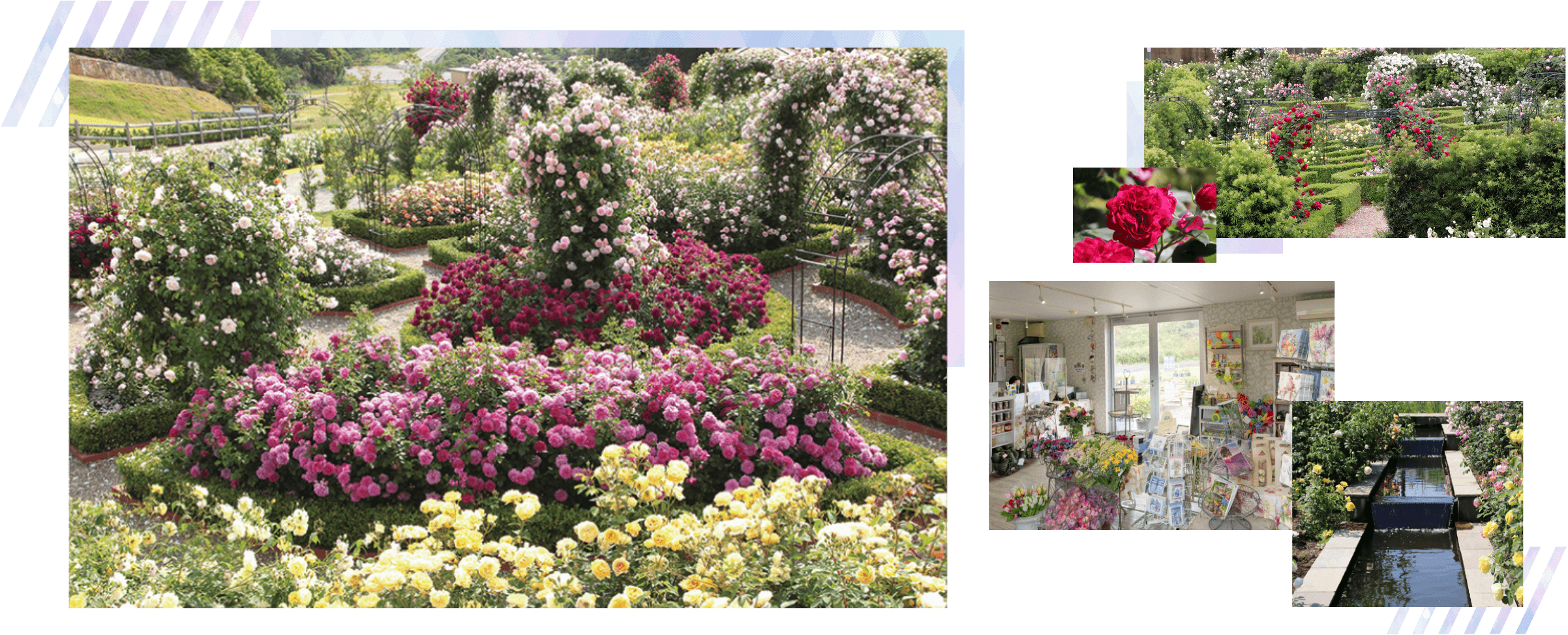
If you’d like to sample more natural attractions, then head over to Hanasaki Farm, operated by the City of Sennan. If you’re visiting Sennan during the nodafuji wisteria season, then you can enjoy wisteria and moss phlox from the lawn area at Hanasaki Farm at the same time. From around May, meanwhile, you’ll be able to witness the more than 3,000 rose bushes at David Austin’s English Rose Garden coming into bloom. And in autumn, you’ll notice the flowers and their scent become richer and deeper in the colder weather.
English roses are known for their wonderful perfume. As with wisteria, the flowers seem so much more beautiful when accompanied by their heavenly scent.
| Address | 大阪府泉南市幡代2001 |
|---|---|
| Tel | 072-480-0031 |
| Official Website | https://www.davidaustinroses.co.jp/ |
* See website for more information.


